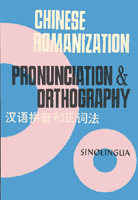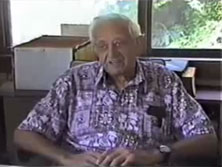Just how common are monosyllabic given names in China? I’ve seen lots of wild guesses, which generally range from about one-quarter to one-half (?!) of the population. Zhang et al., however, give the following figures:
91.06% Chinese have three-character names and only 8.34% have two-character names. People with four characters or more only constitute 0.6% of the population.
This was based on a database of 1,644,911 names in China.
According to a larger survey last year in the PRC, however, 14.22 percent of Han people in China have given names that are monosyllabic … and thus are written with a single Chinese character. On the other hand, 85.61 percent of Han people in China have full names written with exactly three Chinese characters, according to the report released by the National Citizen Identity Information Center, an organization with ties to China’s Ministry of Public Security. (It thus seems likely they have access to especially good data.)
Since the source material is unclear on what is meant by names written with three Chinese characters, it’s possible that some people in the second group have disyllabic family names and monosyllabic given names; but that number is likely to be close to statistically insignificant, given the relative paucity of monosyllabic given names and the outright rarity of disyllabic family names. (Only 0.02 percent of those in Zhang et al.‘s name list had disyllabic family names.)
The sum of 14.22 and 85.61 is 99.83, which leaves 0.17 percent of those in China classified as Han having names that are at least four syllables long and so take at least four Chinese characters to write.
According to a report published last December but which I’m just now getting around to writing about, nearly one thousand names in China are written with at least ten Chinese characters. The news story, alas, does not give any of these names; but it does provide a breakdown of the numbers:
10 characters: 594 names
11 characters: 272 names
12 characters: 94 names
13 characters: 33 names
14 characters: 5 names
15 characters: 1 name
A total of 97 percent of those 999 people live in the predominantly non-Han Chinese region of Xinjiang, which likely indicates that they have non-Han names that are being forced into forms that fit procrustean Mandarinized syllables.
A report from Nanjing states that 309 of the city’s 6 million people have names that take more than four Chinese characters to write.
PRC authorities have proposed limiting given names to two syllables and family names to four syllables (for rare cases in which a child receives a disyllabic family name from both parents).
As for Taiwan, monosyllabic given names are much rarer here than in China. My guess would be about 2 percent. This could probably be worked out from Chih-Hao Tsai’s list of Chinese names; but right now I don’t have the time.
On the other hand, China’s public is being urged to embrace new disyllabic family names, largely because the relative paucity of surnames ensures many, many people in China share common names.
Recent demographic surveys indicate there are about 1,600 surnames, with only 100 or so being frequently used, among Chinese nationals, which means many people share a name. For example, nearly 300,000 people, male and female, use the same common name of Zhang Wei, the statistics show.
The top 1,600 U.S. surnames don’t even cover half of the population, according to the U.S. Census Bureau, whose list of surnames found in the United States contains more than 88,000 entries.
sources:
- Name game: most Chinese use 3 characters, some use 10 or more, Xinhua, December 12, 2007
- Hànzú xìngmíng zuìcháng nǐ xiàn 6 ge zì — xiàn zuìcháng xìngmíng 15 ge zì (汉族姓名最长拟限6个字 现最长姓名15个字), Xinhua, December 12, 2007
- Nánjīng 309 rén xìngmíng chāo 4 zì (南京309人姓名超四字), Yangtze Evening News, December 14, 2007
- Ānshānrén xìngmíng zuìcháng 6 ge zì (鞍山人姓名最长六个字), Anshan.com.cn, December 18, 2007
- Yaxin Zhang, Anton Medievski, James Lawrence, Jianming Song, A study on tone statistics in Chinese names, Speech Communication vol. 36 nos. 3-4, pp. 267-275, March 2002.
- distribution of last names in the United States, U.S. Census Bureau, 1990 U.S. census
Further reading:
 I’ve just added another long section of Yin Binyong’s book on the detailed rules for Hanyu Pinyin. This part (pp. 78-138) covers common nouns (2.4 MB PDF).
I’ve just added another long section of Yin Binyong’s book on the detailed rules for Hanyu Pinyin. This part (pp. 78-138) covers common nouns (2.4 MB PDF).
